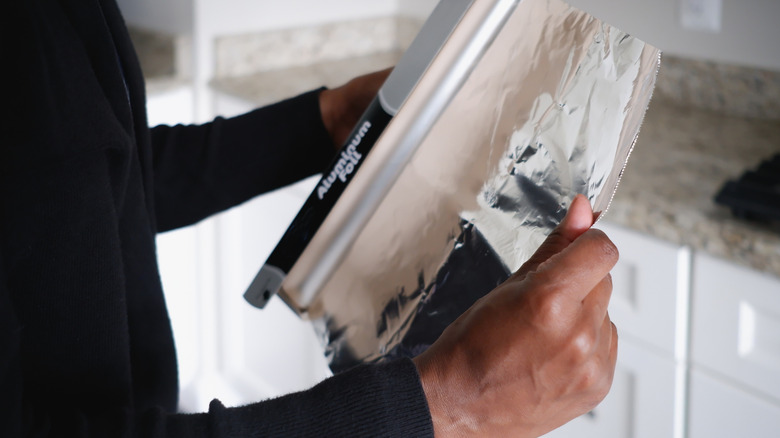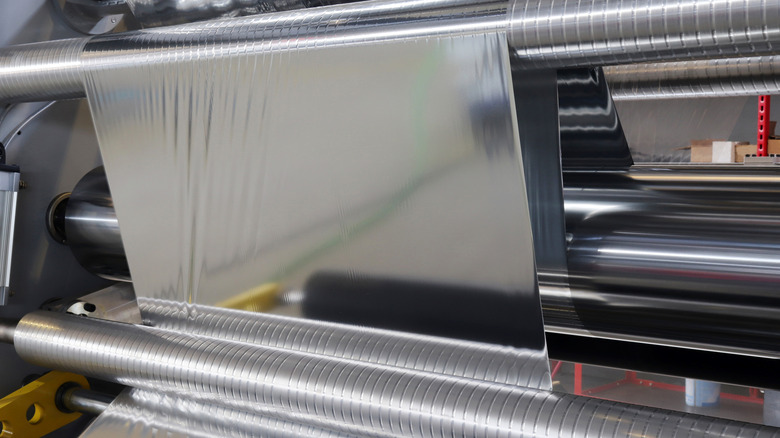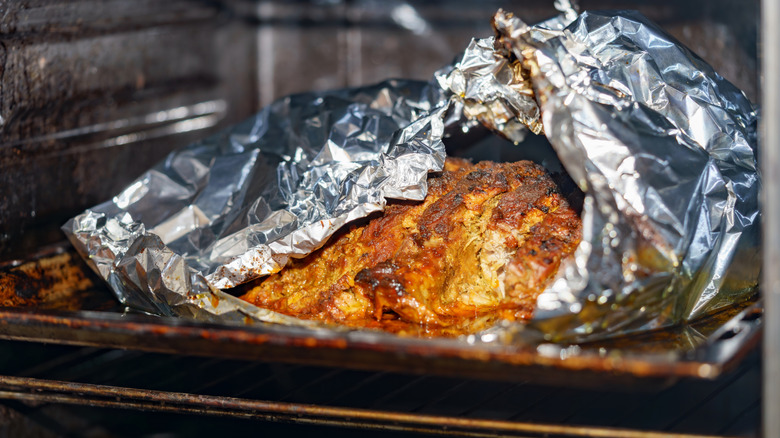The Two Different Sides Of Aluminum Foil Explained- And Which To Use When
The kitchen has many unspoken rules that have been passed down through generations, and few topics cause more debate than how to use aluminum foil. For years, home cooks have argued over whether the shiny or dull side should face the food, citing everything from theoretical scientific principles of heat reflection to old family traditions and tips. It seems like a difference in texture would correspond to a difference in function, but the manufacturer's take on this may surprise you. Whether you're reaching for a roll of aluminum foil for cleaning hacks or baking, don't be concerned about which side is facing up or down, since it doesn't make a difference when cooking or storing food.
The foil works the same regardless of which side touches your casserole or your chicken. Once we accept this fact, we can look into why the two sides look different, and more importantly, discuss the one exception when the side choice really matters. Understanding how the product is made will settle the debate and let you prepare your dinner with confidence, regardless of which way the foil unwraps from the roll.
The reason for the different textures
The difference between the highly reflective, glossy surface and the muted, matte surface found on various types of aluminum foil comes down to the way the foil is made, not a specific design choice for heat reflection. Aluminum foil starts as thick slabs of metal that need to be rolled out to become incredibly thin sheets. The final product is so fine, often less than a thousandth of an inch thick, that it would tear under the tension of the rolling mill if processed as a single layer. To prevent it from breaking, manufacturers roll two sheets through the mill at the same time during the final pass.
This technique results in one side of each sheet making contact with the mill's polished steel rollers. The pressure and the smooth metal of the rollers create the shiny side of the foil. The other side of the foil is pressed only against the second sheet of aluminum. Since this inner side is not against the metal rollers, it has a slightly rougher texture, resulting in a duller finish. This process of making aluminum foil allows for a consistently made product. The fact that one side is shiny and the other is dull is from the manufacturing process, not an intended cooking feature.
When the side choice actually matters
While the manufacturing process is what creates the shiny and dull sides, there is still the general opinion that the glossy side reflects heat better and the dull side absorbs it. Because of this, many people will make sure the shiny side is facing their food when they wrap it to keep warm, or turn the dull side in when cooking to absorb heat. Scientific testing confirms that the difference in reflectivity between the two sides of aluminum foil is so minor it's considered negligible and has no noticeable effect on cooking time or food temperature.
The only time the side you choose actually affects the performance of the foil is when you're using a non-stick version of aluminum foil. Non-stick foil is treated with a specialized coating that's applied to only one side during production. This non-stick surface is often placed on the dull side, which should always face toward the food to prevent sticking. You should always read the packaging to be sure, but otherwise, you should feel comfortable and confident that it doesn't really matter which way you use standard aluminum foil. However, there is a mistake you should avoid making with aluminum foil. It can leach small amounts of aluminum into acidic or salty foods like tomato sauces or citrus fruits, regardless of which side is used, especially when cooked at high temperatures.


